Wheel Drive Shaft Inner Joint and Boot Replacement Inboard Assembly
Tools Required
| • | J 35910 Earred Clamp Tool |
| • | J 41048 Small Swage Tool |
| • | J 8059 Snap Ring Pliers |
Disassembly Procedure
- Use a hand grinder in order to cut through the swage ring. Do not damage the tripot housing (1).
- Remove the large boot retaining clamp from the tripot joint with side cutter.
- Dispose of the large boot retaining clamp.
- Separate the halfshaft inboard boot from the trilobal tripot bushing (3) at the large diameter.
- Slide the boot (4) away from the joint along the halfshaft bar.
- Remove the housing (1) from the tripot joint spider (2) and the halfshaft bar.
- Remove the trilobal tripot bushing (3) from the housing (1).
- Spread spacer ring (2) with the J 8059 .
- Slide the spacer ring and tripot joint spider back on halfshaft bar (1).
- Remove the halfshaft bar retaining ring from the groove (5) on the halfshaft bar.
- Slide tripot joint spider assembly (2) off of the halfshaft bar.
- Clean the following items with cleaning solvent:
- Remove all traces of old grease and any contaminates. Dry all parts.
- Inspect the following parts for damage or wear:
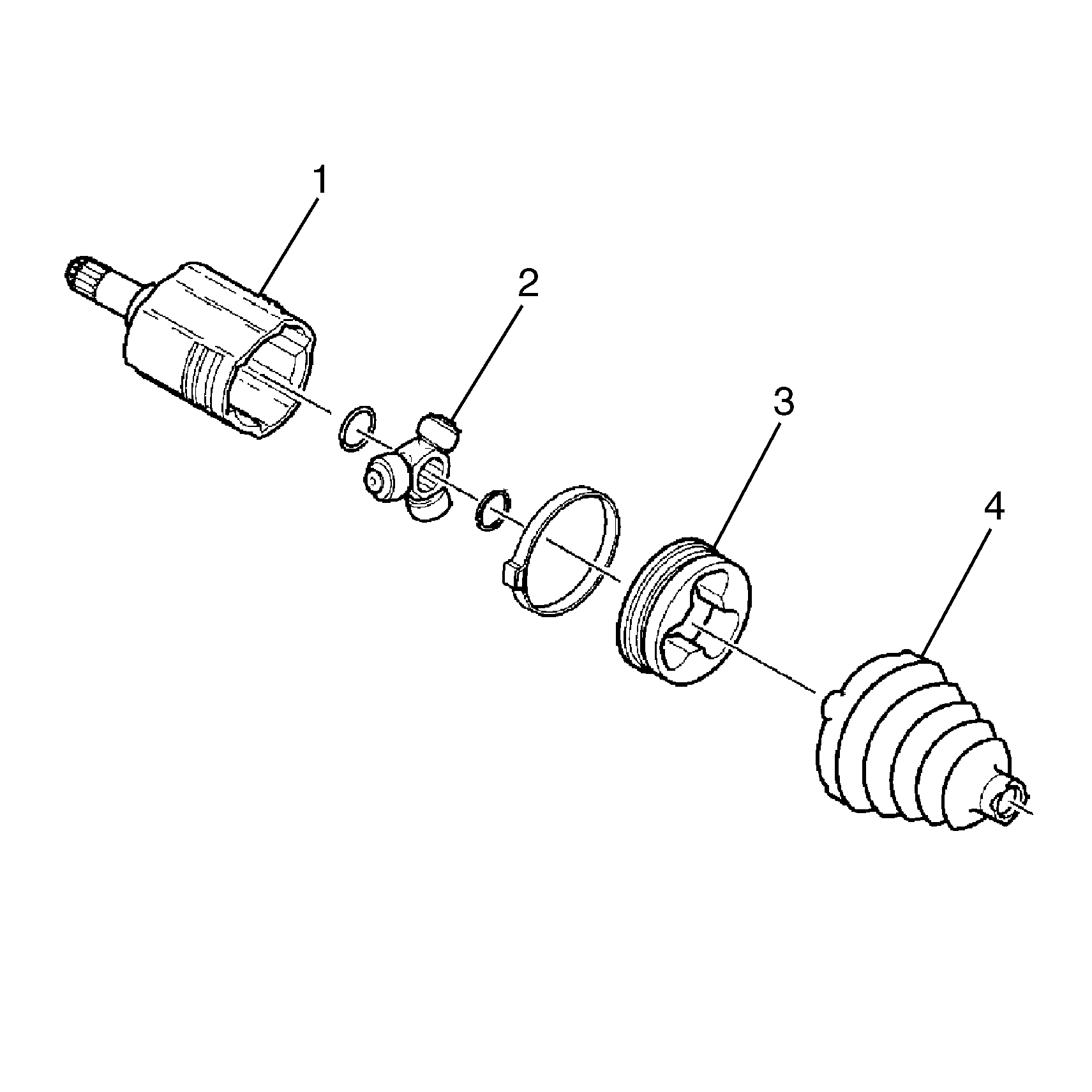
Notice: With the removal of the wheel drive shaft for any reason, the transmission sealing surface (the tripot male/female shank of the joint) should be inspected for corrosion. If corrosion is evident, the surface should be cleaned with 320 grit cloth or equivalent in a rotational motion only. Do not clean with an oscillating motion. Transmission fluid may be used to clean off any remaining debris and the joint wiped dry before installation. Corrosion on the joint sealing surface may damage the transmission seals and cause a fluid leak.
Notice: Do not cut through the wheel drive shaft inboard or outboard boot during service. Cutting through the boot may damage the sealing surface of the housing and the tripot or the constant velocity joint bushing. Damage to the sealing surface may lead to water and dirt intrusion and premature wear of the constant velocity joint.
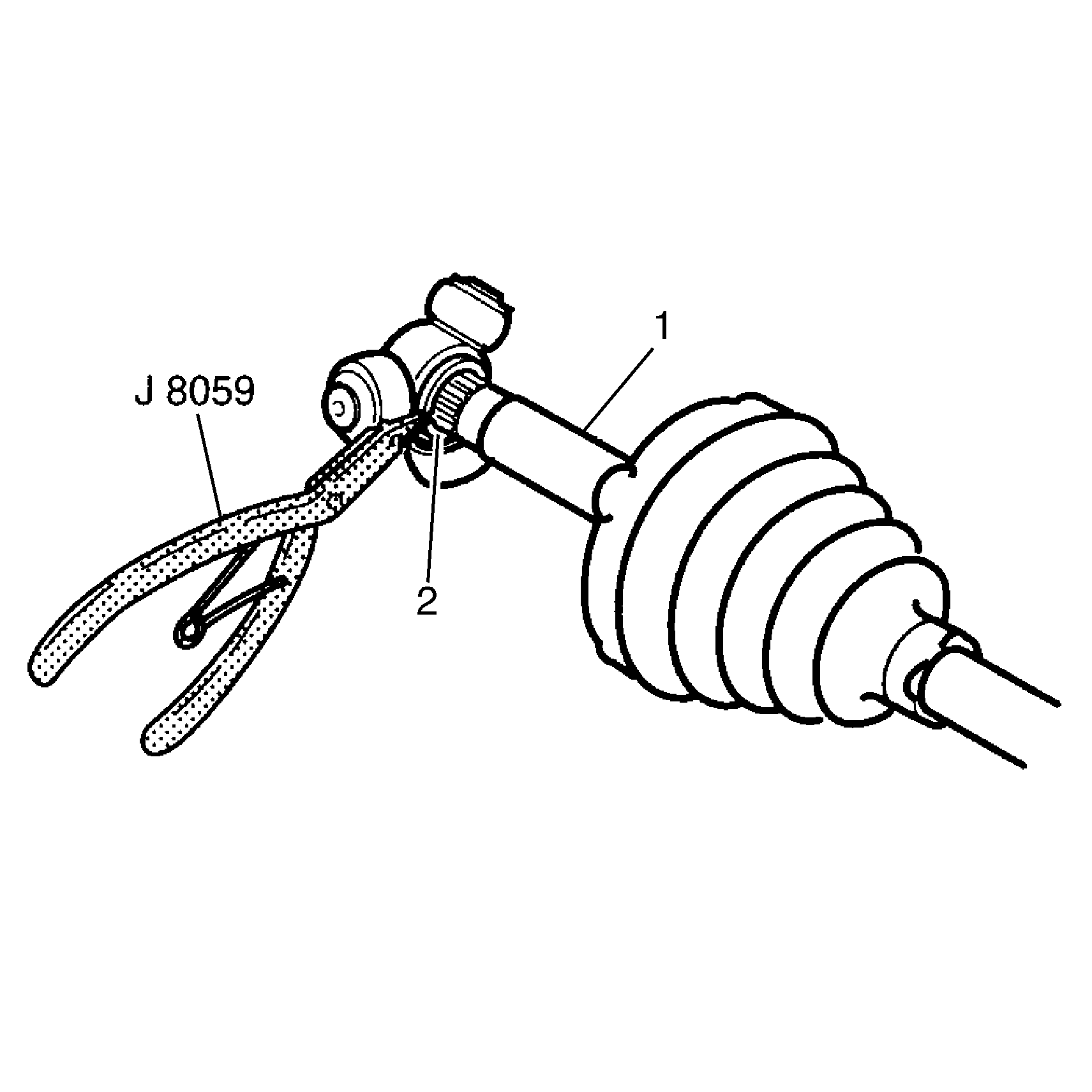
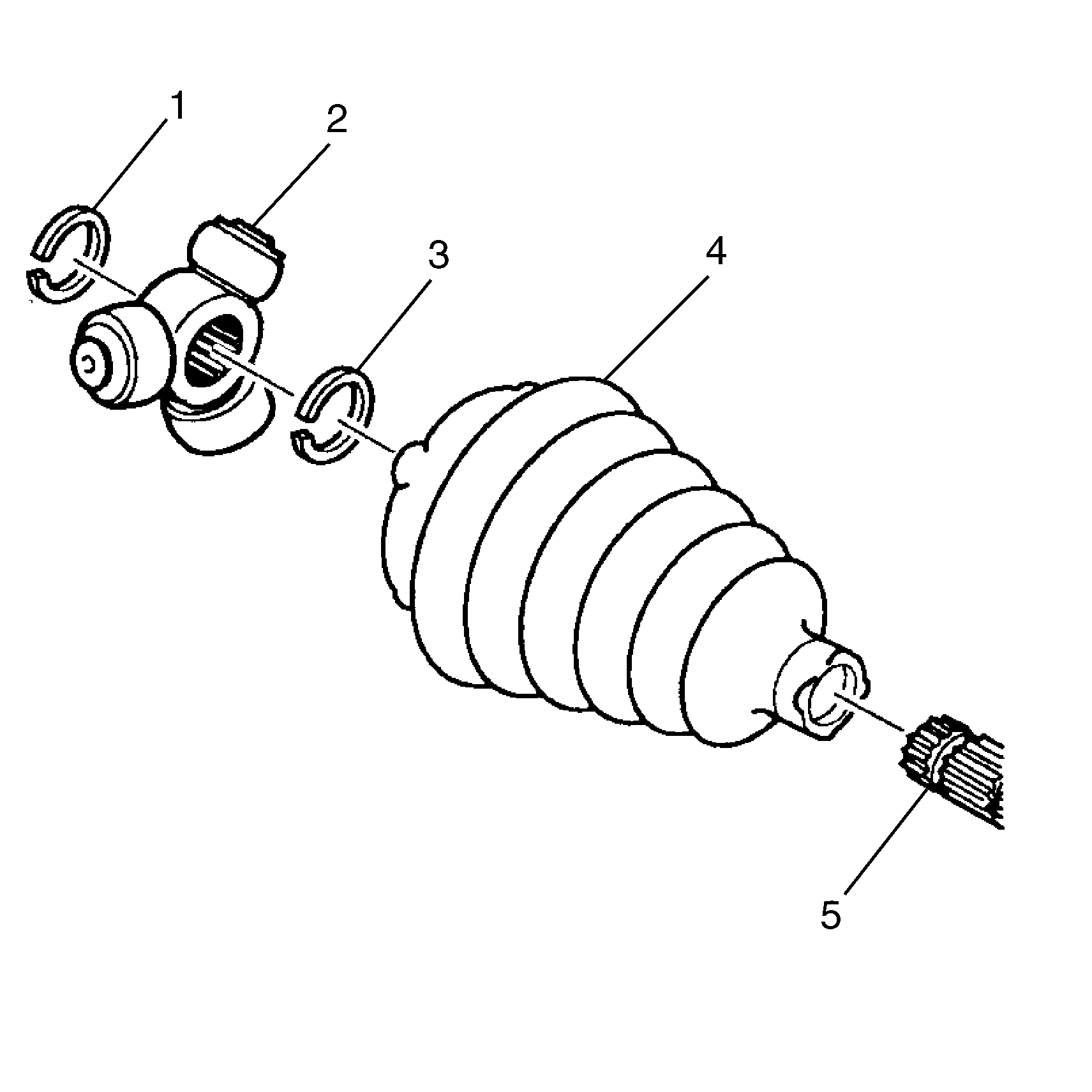
| • | The tripot balls |
| • | The needle rollers |
| • | The housing |

| • | The halfshaft inboard boot (4) |
| • | The tripot joint spider assembly (2) |
| • | The housing (1) |
| • | The trilobal tripot bushing (3) |
| • | The needle rollers |
Assembly Procedure
- Place the new small boot clamp (2) onto the small end of the joint boot (1). Slide the joint boot (1) and the small boot clamp (2) onto the halfshaft bar.
- Position the small end of the joint boot (1) into the joint boot groove (3) on the halfshaft bar.
- Mount J 41048 in a vise and proceed as follows:
- Align the following items:
- Install the spacer ring (2) on the halfshaft bar (1) in groove using J 8059 .
- Slide the tripot joint spider assembly (2) toward the spacer ring (1) as far as it will go on the halfshaft bar (4).
- Install the halfshaft bar retaining ring in the groove of the halfshaft bar.
- Place approximately half of the grease from the service kit in the halfshaft inboard boot. Use the remainder of the grease to repack the housing.
- Install the trilobal tripot bushing (3) to housing.
- Position the larger new boot retaining clamp (2) on the halfshaft inboard boot.
- Slide the housing (1) over the tripot joint spider assembly on the halfshaft bar.
- Slide the large diameter of the halfshaft inboard boot (2), with the larger clamp (3) in place, over the outside of the trilobal tripot bushing and locate the lip of the boot in the groove.
- Position the joint assembly at the proper vehicle dimension.
- Align the following items while latching:

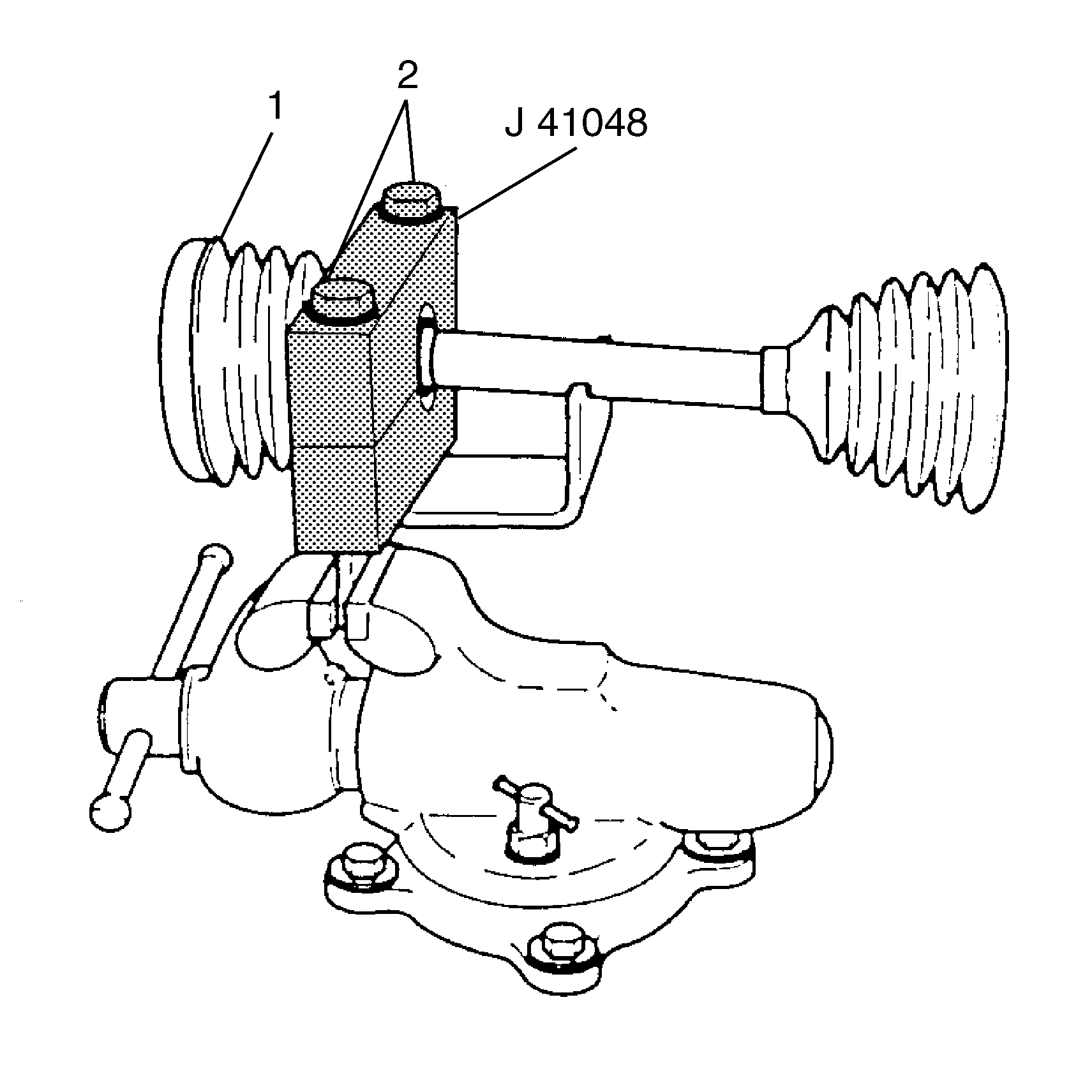
| 3.1. | Position the outboard end (1) of the halfshaft assembly in tool J 41048 . |
| 3.2. | Align the top of boot neck on the bottom die using the indicator. |
| 3.4. | Before proceeding, ensure there are no pinch points on the halfshaft inboard boot. This could cause damage to the halfshaft inboard boot. |
| 3.5. | Insert the bolts (2). |
| 3.6. | Tighten the bolts by hand until snug. |
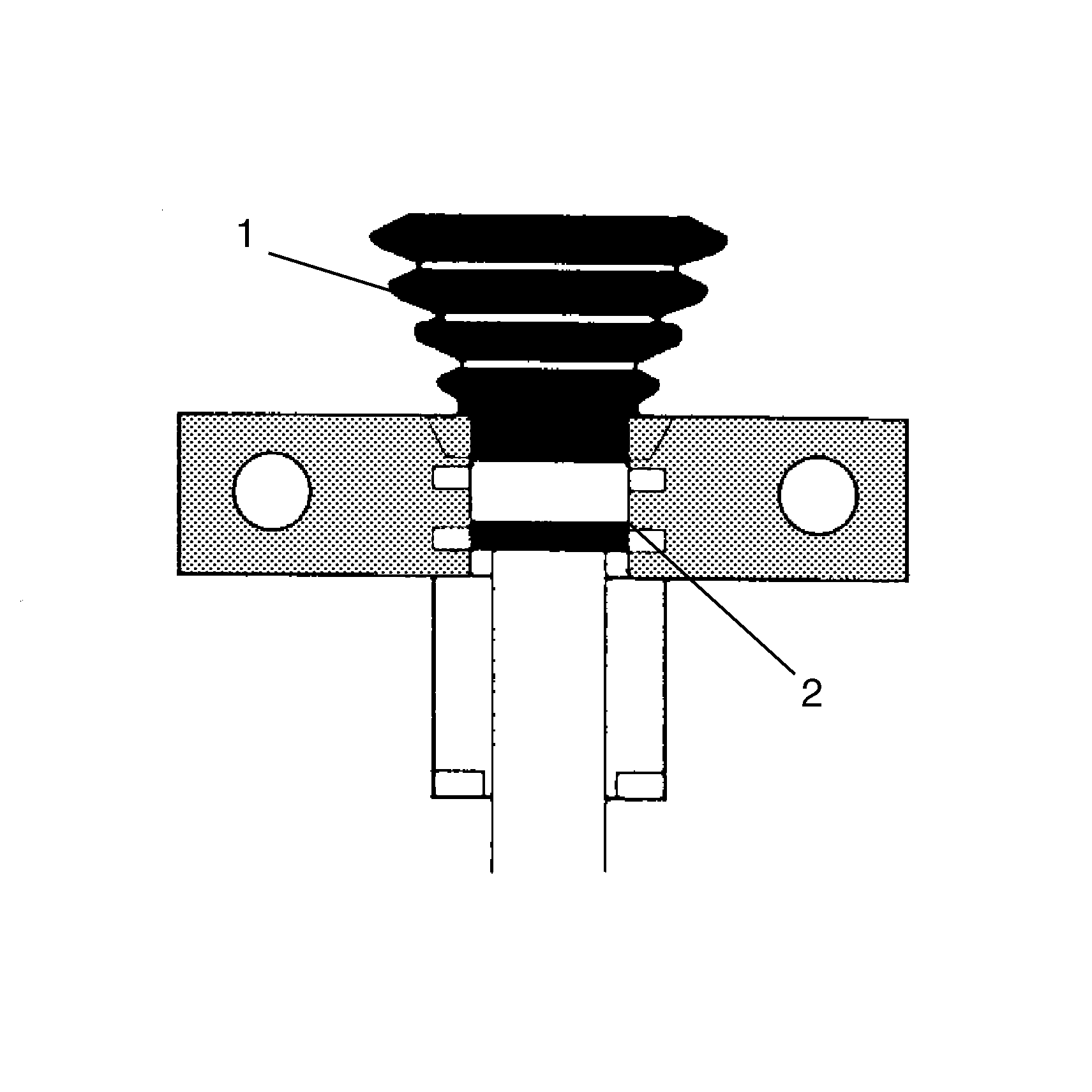
Notice: Use the correct fastener in the correct location. Replacement fasteners must be the correct part number for that application. Fasteners requiring replacement or fasteners requiring the use of thread locking compound or sealant are identified in the service procedure. Do not use paints, lubricants, or corrosion inhibitors on fasteners or fastener joint surfaces unless specified. These coatings affect fastener torque and joint clamping force and may damage the fastener. Use the correct tightening sequence and specifications when installing fasteners in order to avoid damage to parts and systems.
| • | The halfshaft inboard boot (1) |
| • | The housing |
| • | The swage ring (2) |
Tighten
Tighten each bolt of
J 41048
180 degrees at a time using a ratchet wrench. Alternate
between each bolt until both sides are bottomed.
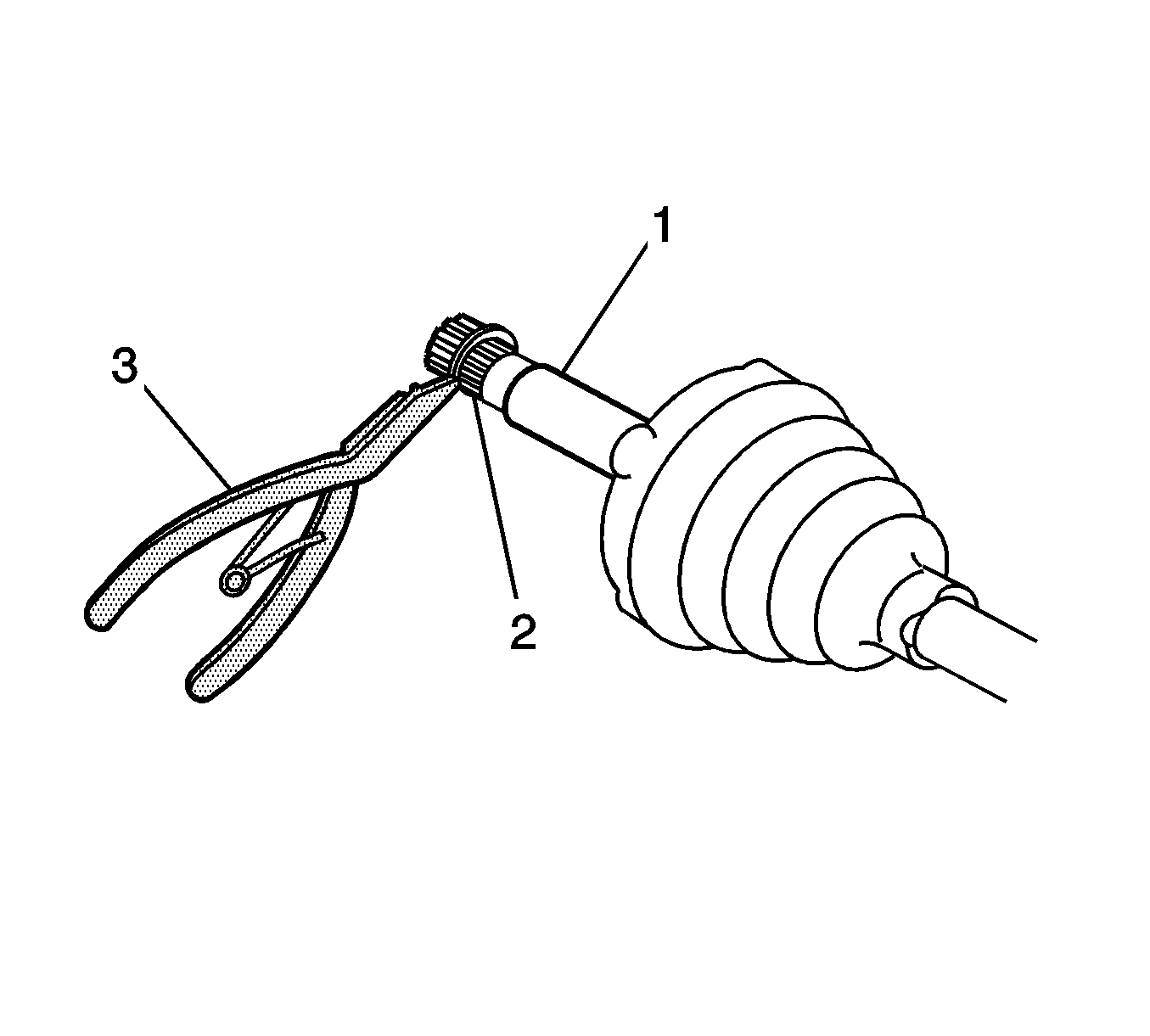
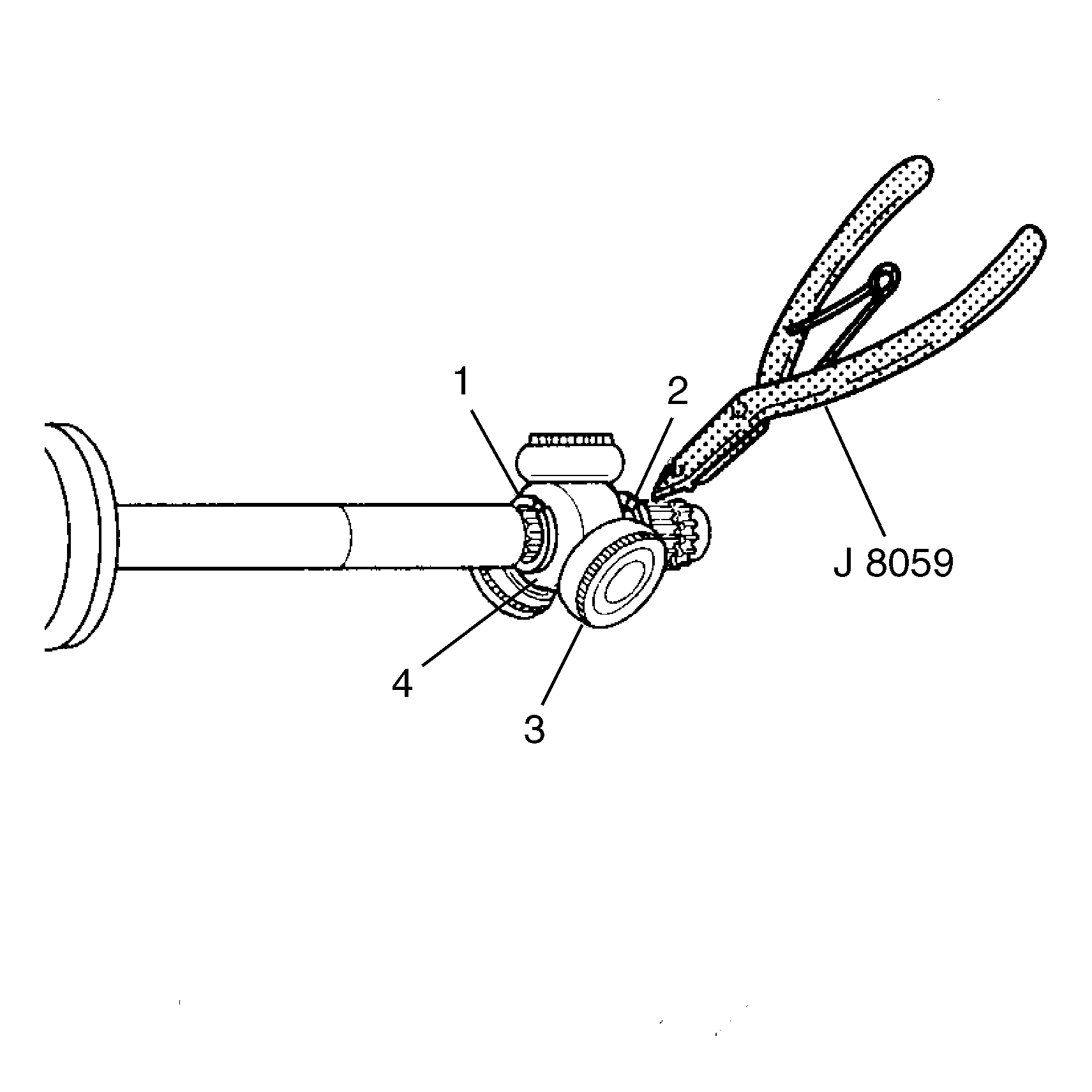
Important: Ensure that the counterbored face of the tripot joint spider (2) faces toward the end of the halfshaft bar (4).
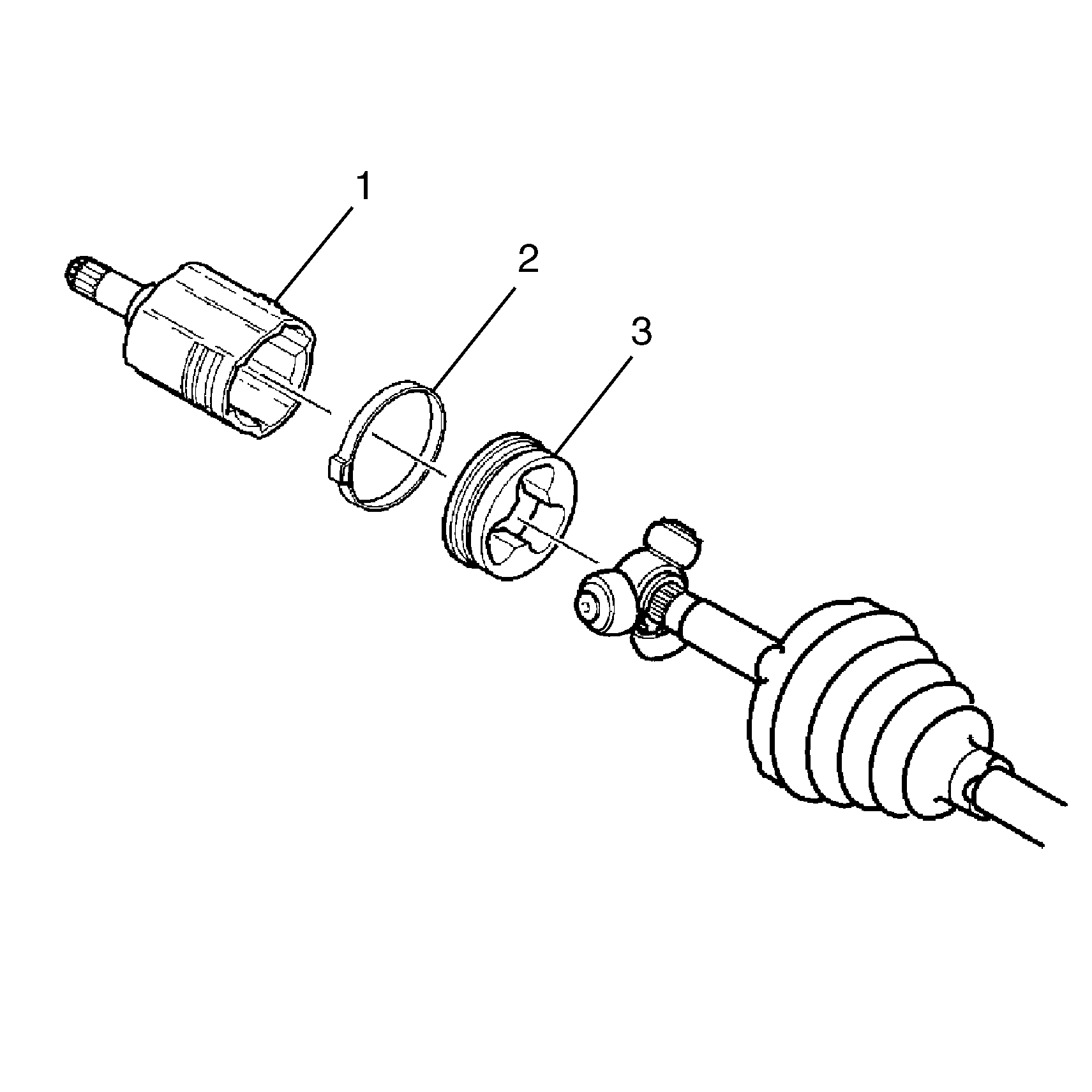
Important: Ensure the trilobal tripot bushing (3) is flush with the face of the housing (1).

Important: The halfshaft inboard boot must not be dimpled, stretched out or out of shape in any way. If the halfshaft inboard boot is not shaped correctly, carefully insert a thin flat blunt tool (no sharp edges) between the large boot opening and the trilobal tripot bushing in order to equalize the pressure. Shape the halfshaft inboard boot properly by hand. Remove the tool.
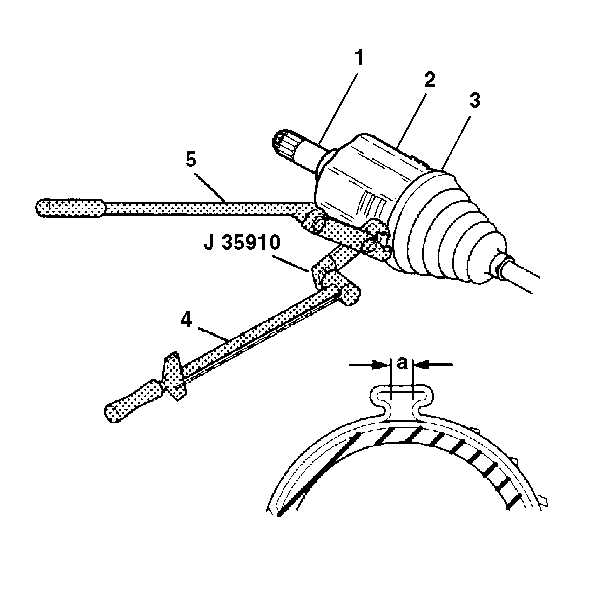
| • | The halfshaft inboard boot (3) |
| • | The tripot housing (1) |
| • | The large boot retaining clamp (2) |
Tighten
Crimp the boot retaining clamp (2) with
J 35910
to 176 N·m (130 lb ft).
Add the breaker bar (5) and the torque wrench (4) to the
J 35910
if necessary.
